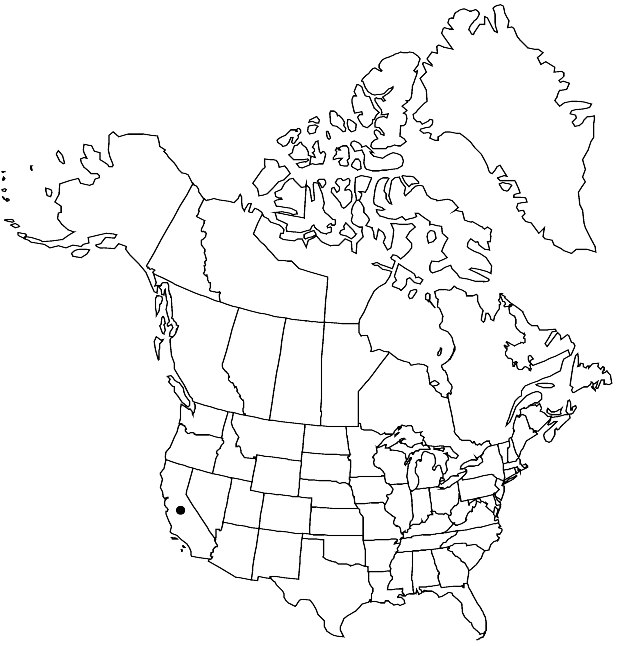Boechera yorkii
Madroño 51: 387, figs. 1–3. 2004.
Perennials; long-lived; sexual; caudex woody. Stems usually 1 per caudex branch, arising from center of rosette near ground surface, 1–3 dm, densely pubescent proximally, trichomes short-stalked, 4–7-rayed, 0.1–0.5 mm, mixed proximally with simple and short- to long-stalked, 2- or 3-rayed ones, to 1.5 mm, moderately pubescent distally. Basal leaves: blade linear-oblanceolate, 1.5–3 mm wide, margins entire, ciliate proximally, trichomes (simple and 2- or 3-rayed), to 1.5 mm, surfaces moderately pubescent, trichomes short-stalked, 4–7-rayed, 0.3–0.6 mm. Cauline leaves: 9–17, concealing stem proximally; blade auricles absent, surfaces of distalmost leaves moderately pubescent. Racemes 8–35-flowered, usually unbranched. Fruiting pedicels reflexed, straight, 1.5–2 mm, pubescent, trichomes appressed, branched. Flowers pendent at anthesis; sepals pubescent; petals yellowish proximally and brick-red distally or, rarely, one color throughout, 9–10 × 0.8–1 mm, glabrous; pollen ellipsoid. Fruits (immature) reflexed, often appressed to rachis, not secund, straight, edges parallel, ca. 4 cm; valves pubescent throughout; style ca. 0.3 mm. Seeds not seen.
Phenology: Flowering May.
Habitat: Crevices and ledges of calcareous rock outcrops
Elevation: 2200-2400 m
Discussion
Boechera yorkii is immediately recognizable by its yellowish to brick-red petals and extremely short (1.5–2 mm), reflexed fruiting pedicels. It is known only from Last Chance Mountains in Inyo County.
Selected References
None.
